Top Ten Stops on The Underground Railroad to Visit Today
When I was in fifth grade, we moved from inner city Pittsburgh to the very rural mountains of Pennsylvania. I didn’t want to move and culture shock was massive–I didn’t adjust overly well. I had gone to a large school that was as diverse as you can imagine and found myself in a, quite literally, all white town and school. There are a whole lot of stories I could tell, but what I want to talk about is the house we moved into. It looked like an old barn to me and we were told it originally dated back to the 1800s (not unusual for that area). There was a nook in the kitchen that had been renovated into a kind of open pantry. The church (it was a manse) told us that it had been walled off and had only recently been discovered. The rumor mill was that it had been a hiding spot on the Underground Railroad. My angry kid self embraced that idea–I loved mysteries and had learned all about the significance of the Underground Railroad. I crawled all over that house, looking for clues and other hiding spots–and I found them. One bedroom closet had a weird shelf thing with a removable panel and enough space behind it to sit in. There was a massive wardrobe in the attic (how did it get there??) that was so deep I was convinced I was going to arrive in Narnia. The basement had a spot where you could essentially crawl up the wall and tuck yourself into the dirt. We didn’t last very long in that town, but I have forever wondered if it was just an old quirky house or if it truly was a potential stop on the Underground Railroad. While I don’t have that answer, here are ten stops on the Underground Railroad that you can visit today.
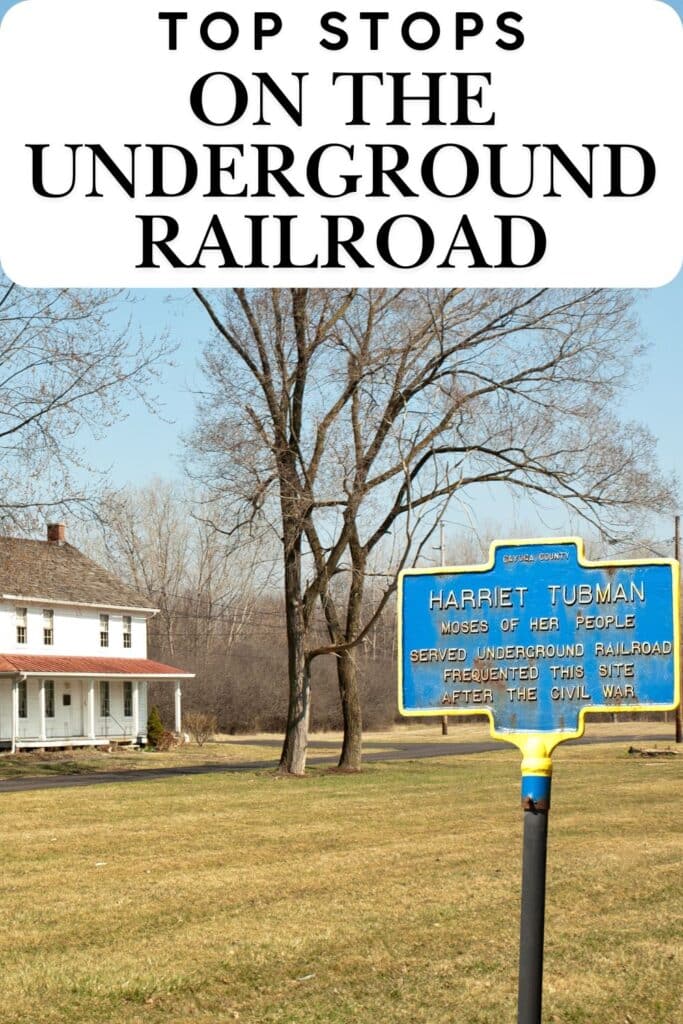
This post contains affiliate links.
A Brief History of the Underground Railroad
The Underground Railroad has a distinct mark on the history of the United States and the struggle to end slavery. It was (and still is) a symbol of the resilience, willpower, and decisiveness in the fight to abolish slavery. The Underground Railroad was a secret network of routes and safe houses used by enslaved African Americans to escape to free states and Canada in the 19th century. It emerged in the early 1800s as the abolitionist movement gained momentum, offering a form of resistance to the institution of slavery in the United States. The “railroad” was not a literal train system but a series of covert pathways, with “conductors” (guides) and “stationmasters” (safe house owners) who assisted freedom-seekers. They gave them food, medicine, and shelter, risking their own freedom. It was a dangerous undertaking, as those involved risked their lives to help enslaved people escape from the South to the North and beyond.
Key figures in the Underground Railroad include Harriet Tubman, who became one of its most famous conductors. Born into slavery, Tubman escaped to freedom and then made numerous trips back to the South to lead others to freedom. She is credited with helping hundreds of enslaved individuals escape, using a variety of techniques to evade detection. Another important figure was William Still, known as the “Father of the Underground Railroad,” who kept detailed records of the people he helped escape and their stories. These records became a vital source of information on the workings of the network.
The Underground Railroad was an act of civil disobedience and defiance against the system of slavery, and its impact was profound. While it is difficult to estimate exactly how many people escaped using the network, historians believe that thousands of enslaved African Americans made it to freedom, thanks to the courage and dedication of both African American and white abolitionists. The system also played a critical role in raising awareness about the horrors of slavery and galvanizing the abolitionist movement, ultimately contributing to the tensions that led to the Civil War.
The John Rankin House, Ripley, Ohio
John Rankin (born in 1793) was an avid advocate of the abolition of slavery. Rankin’s contribution to the abolition of slavery in the US was reflected in how he lived and the legacy he left behind. He was a Presbyterian minister who moved to Ripley from Tennessee in 1822 and established the John Rankin estate.
This estate is perched on a hill overlooking the Ohio River. This vantage point offers visitors one of the most breathtaking views of the river and the surrounding valley. The house’s location on the hill was advantageous to Rankin’s cause because it allowed him to monitor the movement of slave catchers and warn them in time.
He used a lantern as a signal at night. He would place it in his window to guide prisoners escaping to freedom. When the lantern was lit, it meant that the slaves were safe to cross over and if the lantern was not lit, the slaves knew that danger lurked close.
As a designated national historic landmark, John Rankin’s house is a haven for people seeking to learn more about slavery in the US and the advocacy efforts John made towards the abolition of slavery.
National Underground Railroad Freedom Center, Cincinnati, Ohio
Inside the National Underground Railroad Freedom Center is an actual pen (although reconstructed) used to hold slaves. This is a symbol of how cruel slavery was in the 19th Century. You will find other exhibits inside this center, including interactive displays, artifacts, and multimedia presentations.
You will learn about how people risked their lives to help slaves escape to freedom and the challenges these freedom seekers went through. There are multimedia presentations (including a film about John Rankin and John Pancer), exhibitions, and various programs that raise awareness about slavery, how it affected people in Ohio and beyond, and the endeavors by various civil rights leaders to abolish this practice.
Harriet Tubman National Historic Park, Auburn, New York
In 1822, Harriet Tubman was born into slavery. Her subsequent escape and efforts to help others flee slavery gained her the nickname ‘Moses’ of the slaves. She is believed to have guided over 70 slaves to freedom. Her home became a beacon of hope for people seeking freedom from slavery.
This house contains materials documenting Tubman’s life and legacy as an Underground Railroad conductor. Tubman worked for the Union Army during the Civil War, first as a cook and nurse but later a spy. She is credited as being the first woman to lead an armed military operation when she guided a raid at Combahee Ferry, freeing over 700 slaves.
The Harriet Tubman grounds hold her grave and relics of her time and efforts in helping slaves escape to freedom. There are exhibits, artifacts, and presentations, showcasing her involvement in the abolition of slavery in the US. You can also visit the Thompson AME Zion church where Tubman was an ardent follower and member until her death.
Levi and Catharine Coffin House, Indiana
Levi Coffin and his wife, Catharine, were also very popular conductors in the Underground Railroad. Their house provided refuge to thousands of freedom-seeking slaves who had escaped from their masters in the South. The house’s location along the route to freedom made it easy for escaped slaves to stop and seek assistance before moving on to safer places in the North. The house is close to the Ohio border.
Levi and his wife believed in peaceful demonstrations. Because of this, their approach to the abolition of the slave trade was more subdued than most. They were ardent Quakers who did not believe in violence and that every person had a right to freedom and dignity. Their house had many hidden rooms and concealed spaces where slaves hid to avoid detection when their masters came looking for them.
The house is an educational center filled with exhibitions and artifacts that relate to the time and efforts of Levi, Catharine, and other conductors in the underground railway.
Frederick Douglass National Historic Site, Washington D.C
The Frederick Douglass National Historic Site is named after one of the country’s strong advocates for the abolition of slavery. Frederick Douglass was once a slave. After he escaped to freedom, he became one of the staunch supporters of slaves seeking freedom. The large Victorian-style mansion was his home until he died in 1895.
Douglass was a writer and an orator. In this house, you will come across the letters, speeches, and autobiographies he wrote during his time. There are exhibits, presentations, books, and artifacts that detail the life and works of Frederick Douglass and his contribution to the abolition of slavery. As a former slave himself, Douglass offers deep insights into what it meant to be a slave and takes his readers through an intensive journey into history and slavery. His efforts as an advocate of the abolition of slavery made the 14-room home perched on a hill one of the most revered stops on the Underground Railroad.
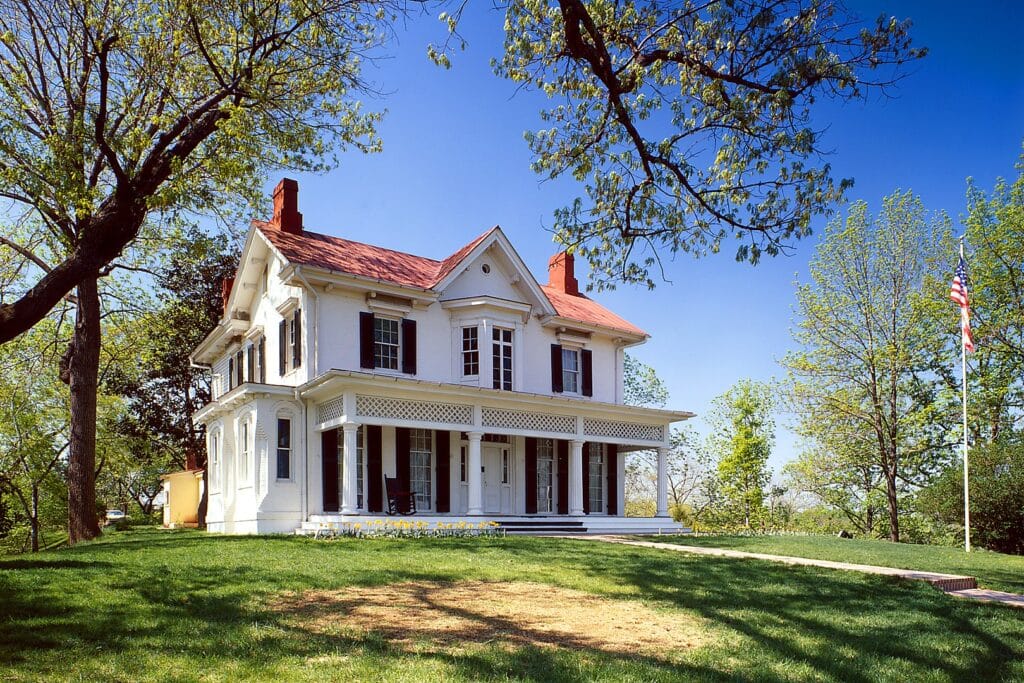
Thomas Garrett House
Thomas Garrett was another Quaker whose efforts to advocate for the abolition of slavery through his works as a conductor in the Underground Railroad became recognized and respected over the years. He was the inspiration for the character of Simeon Halliday in Harriet Beecher Stowe’s Uncle Tom’s Cabin. Thomas’s house was in an ideal location on the Delaware border. This location made it easy for people escaping to freedom from the South to seek refuge before heading to safer states.
His efforts landed him in trouble with authorities several times, although he was never arrested. He risked his life more than once to hide slaves escaping to freedom. The Garrett house offered shelter, food, and information to over 2700 fleeing slaves, becoming one of the iconic stops along the Underground Railroad. Garrett was also a friend and benefactor to Harriet Tubman, often providing her with money, shoes, and means.
Francis Gillette House, Connecticut
Francis Gillette was very instrumental in the abolition of slavery in Connecticut. As a lawyer and member of the Connecticut State Legislature, he helped push laws that favored the abolishment of slavery and the slave trade in the South.
Gillette was a respected conductor in the Underground Railroad system. He used his house as a safe refuge for freedom seekers. His political connections provided him with a much-needed source of information and updates on what was going on in the advocacy for the abolition of the slave trade. His house is now listed on the National Register of Historic Places.

John P. Parker House, Ohio
Parker became an advocate of the abolition of slavery after he gained freedom from his masters. He established a haven on the Ohio River. This strategic location aided him in transporting hundreds of slaves fleeing to freedom from the South. He used a boat to cross the river and take people to Ripley.
He was also a successful iron foundry owner who used his financial success and influence to help people escape to freedom. The John Parker house contains numerous hidden rooms and compartments where slaves hid from their masters in pursuit. It has been designated a National Historic Landmark. Inside the museum, you will learn about his efforts and involvement in the abolitionist movement and how he risked his freedom to help others.
Nathan Thomas Museum, Michigan
Nathan and Pamela Thomas were active Quakers who built their home in Michigan in 1835 and engaged in countless missions to help people seeking freedom escape. Pamela made articulate recordings in her memoirs about her husband’s advocacy for the abolition of slavery.
Nathan was the first medical doctor in Kalamazoo County. He would later trade medicine for a more lucrative real estate career. His success in this business was instrumental in his work as a conductor in the Underground Railroad. He used his resources to help people move from the South to Detroit and onward to Canada and their freedom. He was also among the founders of an anti-slavery Michigan newspaper. This newspaper was devoted to advocating for the abolition of slavery. He tried, albeit unsuccessfully, to run for Governor in 1845. However, the efforts to abolish slavery did not stop because the winner, James Birney, was a fellow abolitionist.
The house has a lot of historical significance and contains exhibits, artifacts, published works, and other media related to Nathan and Pamela’s contribution to the abolition of slavery. They provided medication, safe passage, and information that helped over 1500 freedom seekers escape to their freedom.
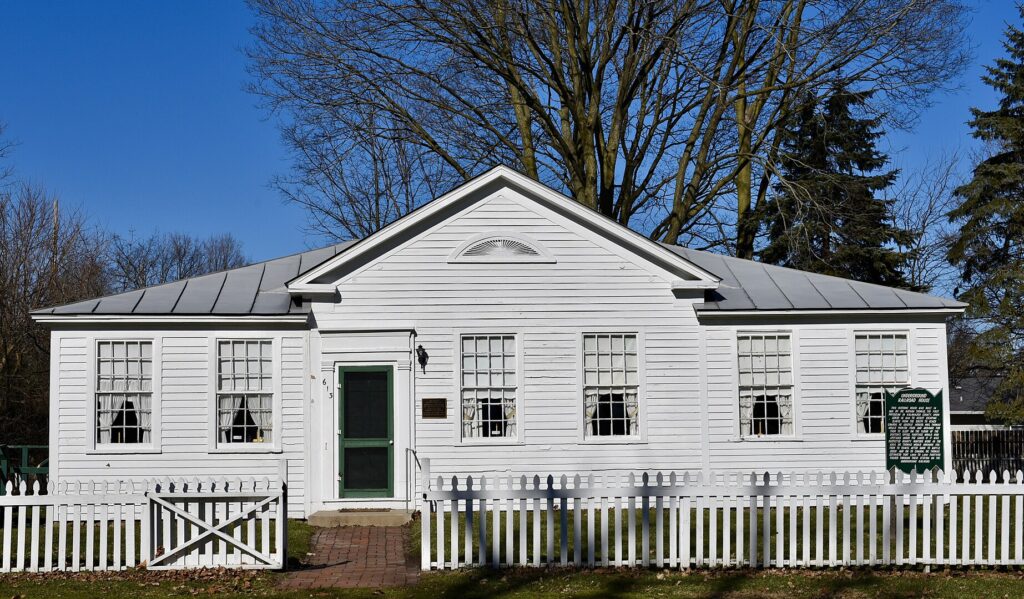
John Brown Farm and Gravesite, New York
The John Brown Story is a sad one. He lost his life for his efforts in the advocacy for the abolition of slavery. The house, perched high in the Adirondack mountains, was the perfect spot to hide people escaping slavery and offer them food and assistance.
John Brown and his 21 colleagues raided a US arsenal at Harper’s Ferry, targeting weapons stored there to use for furthering their anti-slavery efforts. His plan backfired. Ten raiders were killed and seven tried and executed, including Brown himself. He was arrested, tried in Virginia, found guilty, and sentenced to death. Only five escaped.
In December 1859, John Brown died by hanging. His remains were sent home for interring. Remains of other colleagues who had died during this raid were also brought to the Brown’s land, now a National Historic Landmark, for burial.
This is by no means a comprehensive list of stops on the Underground Railroad. Each of these, and many more, deserve more attention than a top ten post can give. If you want to learn more but can’t get to one of the sites, here are a few books to check out.
For kids:
What Was the Underground Railroad? by Yona Zeldis McDonough
Harriet Tubman: Conductor on the Underground Railroad by Ann Petry
…If You Traveled on the Underground Railroad by Ellen Levine
The Patchwork Path: A Quilt Map to Freedom by Bettye Stroud
For adults:
The Underground Railroad: Authentic Narratives and First-Hand Accounts by William Still
Gateway to Freedom: The Hidden History of the Underground Railroad by Eric Foner
Hidden in Plain View: A Secret Story of Quilts and the Underground Railroad by Jacqueline L Tobin
Harriet Tubman by Captivating History
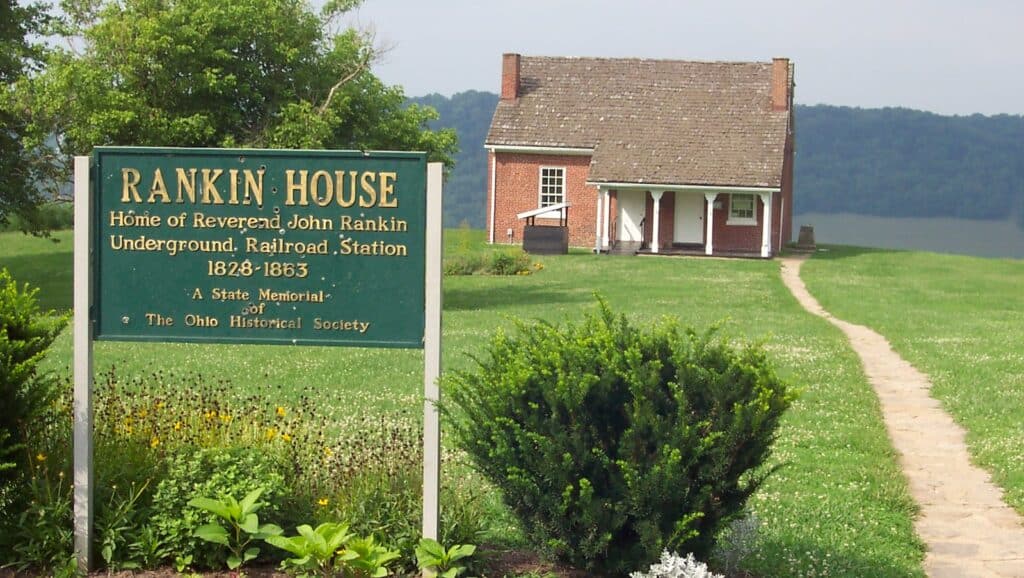

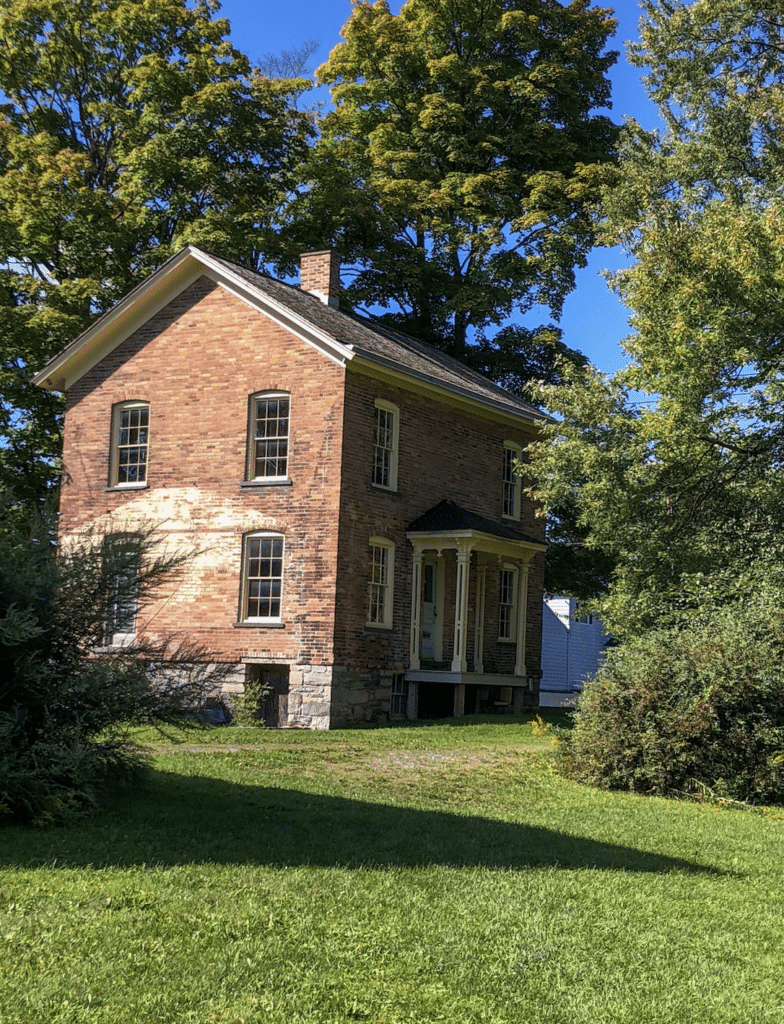
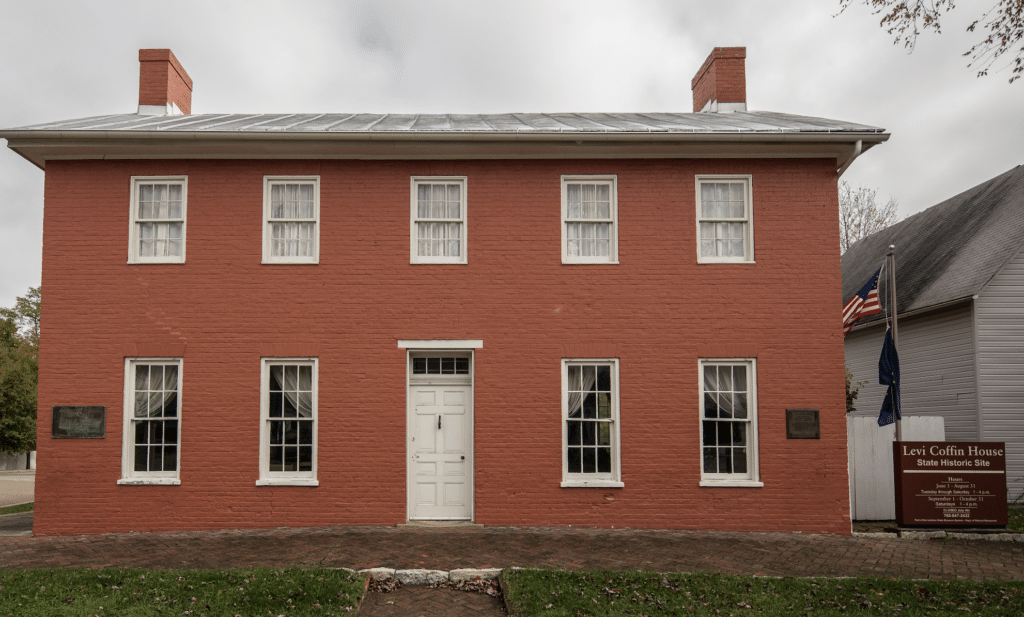
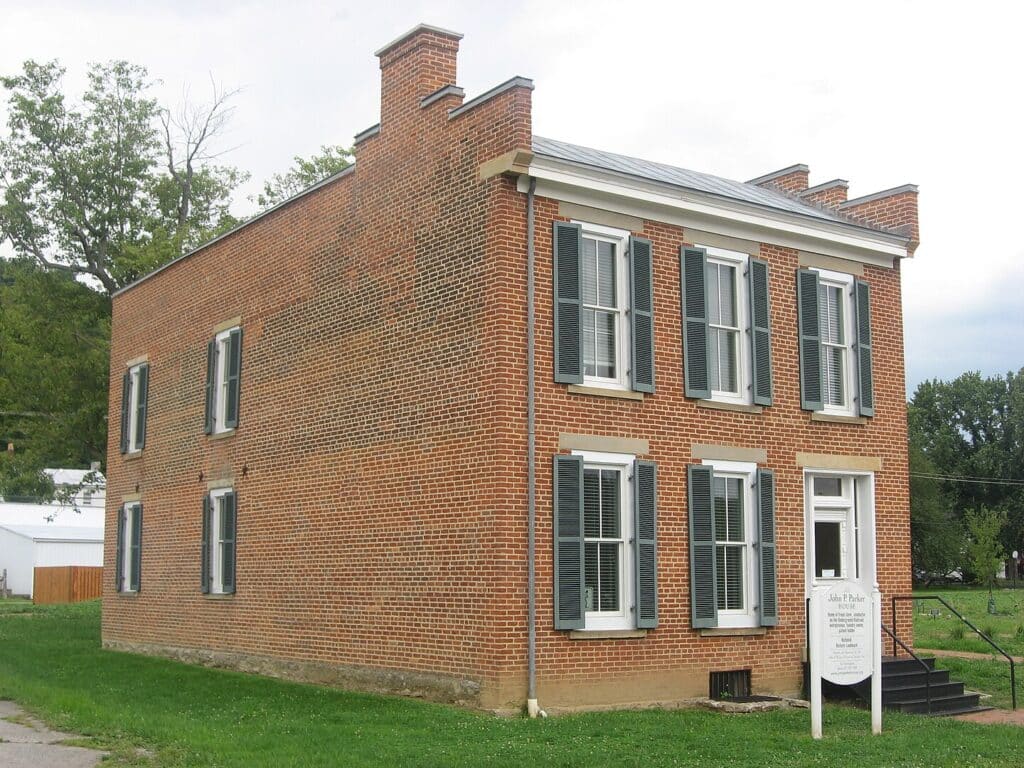
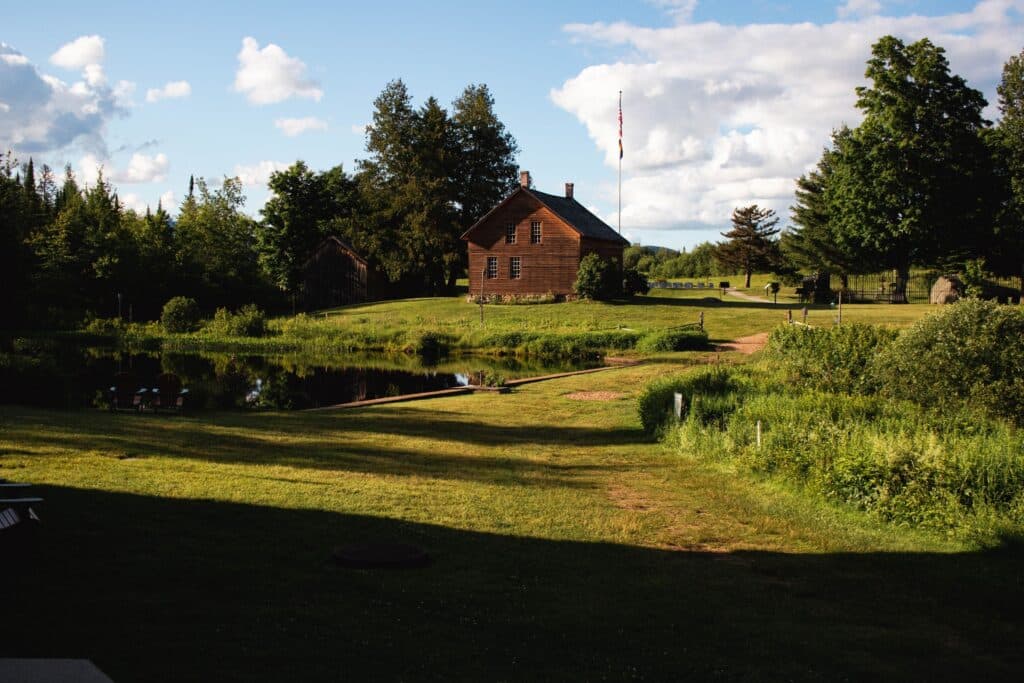








What a fascinating childhood adventure! Your exploration of that old house sounds amazing. It’s so cool you found those hidden spots. I wonder too if it was part of the Underground Railroad. Thanks for sharing!